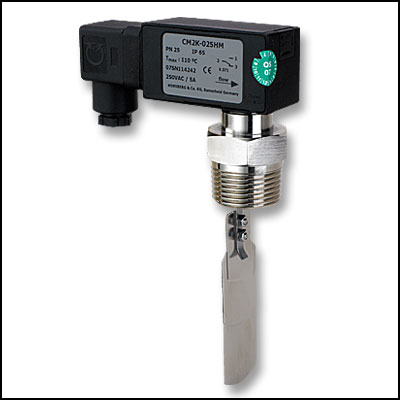
Design & Specification :
| Type | : paddle, thermal, piezo, and shuttle/piston, ultrasonic (doppler) |
| Temperature | : -550C to +3500C |
| Medium | : Gas, Water, Oil, Chemicals, hydrocarbons and more |
| Pressure | : 0 to 1MPa |
| Switching capacity | : up to 26 VA, 20 W |
| Power Supply | : 18-36 VDC, 85-265 VAC |
| Enclosure | : Standard version: IP66 or Ex-proof version: IP67 |
| Ex-proof certification | : IECEx, ATEX, NEPSI, and Japanese ex-proof certification |
For more detail please contact :
PT. Inako Persada
Office : Cikarang, Bekasi, Indonesia
Phone : 021-89903505
Email : sales@inakopersada.com
Mobile/WA : 0853 5111 2309
Description
A flow switch is a device that monitors the flow rate and pressure of liquids, air or other gaseous media be used to monitor flow over a given period of time, or set up to continuously monitor total flow.
Technically, a flow meter or indicator may not necessarily be a true flow ‘switch’ – if the device only registers and displays information, it’s more properly called a meter or indicator. In most cases, though, they’ll be able to trigger actions or stop/start other components elsewhere in the system – pumps, for example – in order to adjust flow rate and pressure to the desired and programmed levels. This is then a true flow switch.
Because there are so many different kinds of flow switch, as we’ll see in subsequent sections, there’s also a very wide range of flow switch installation methods and techniques. When looking for information on how to wire a flow switch, most important thing is to have a clear understanding of which type of switch you’re using and for what purpose.
There are some basic rules of thumb that apply to most flow switch installation methods, however. Broadly speaking, these include:
Installing flow switches on a straight section of pipe or duct
Ensuring there’s a good length of straight pipe both in front of and behind the switch – ideally, the equivalent of 10x the pipe’s diameter
Avoid fitting or wiring a flow switch near to bends, other fittings, valves, drains, narrower or wider sections of pipe, and any other features that might cause obvious fluctuations in flow rate through this area
Application
- Water supply
- Waste water treatment plants
- Fire fighting systems
- Power plants
- Pulp and Paper Industry
- Drinking water
- Irrigation
- Heating – conditioning systems
- Salty water or Marine
- Chemical Industry
- Oil and Gas
- Others industries
